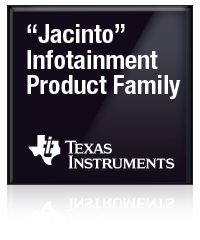How to Select a Proper Inductor for Low Power Boost Converter
Texas InstrumentsProcessor SDK RTOS Customization: Modifying Board library to change UART instanc
Texas InstrumentsBattery-charging considerations for low-power applications
Texas InstrumentsThe wearable and personal-electronics industries are booming. Devices in this market vary wildly by application and use. These multifunction devices are designed to help people in their daily activities and make their lives comfortable. They can be found in different shapes, colors, sizes, and safety measures. They may differ significantly from each other, but they all have one thing in common—the need for a battery and a battery charger.
These portable devices are typically powered by batteries installed internal to the device, which must be charged efficiently and quickly on a regular basis. The user’s charging experience also needs to meet the requirement of safety, comfort, and convenience.
This article presents the trade-offs between linear chargers and switch-mode chargers. Specific challenges arise with each topology when used to charge a battery pack in wearable applications. The differences between linear and switch-mode topologies are described with details about how each topology can address the requirements of wearable and personal electronic devices. These details range from thermal performance to cost, including size, application area, features and flexibility, electromagnetic interference (EMI), bill-of-material (BOM) counts, charge time, and so on. Finally, there is an evaluation for which charger topology serves which type of requirement best. Understanding charger-related system-level details enables the designer to save both time and cost.
Datecodes and Shelf Life of Hermetic Packages
Texas InstrumentsTexas Instruments hermetic packaged devices are fabricated in accordance with MIL-PRF-38535 and TI's own world class quality and reliability standards. The only age requirement for QML products is stated in MIL-PRF-38535 paragraph 3.10: Solderability. All parts shall be capable of passing the solderability test in accordance with TM 2003 of MIL-STD-883 on delivery. These products are warranted to do so in accordance with the Texas Instruments Incorporated Standard Terms and Conditions of Sale for Semiconductor Products.
Android Boot Optimization for IVI Systems
Texas InstrumentsBoot-time optimizations are a critical component for a better Auto infotainment experience. This application report captures the details on how to improve android boot time and is meant to be a reference implementation. The end user (OEM/ODM/Customer/Product Owner) can review the optimizations that were tried and make a choice for the final product accordingly.
Optimizing L Measurement Resolution for the LDC161x and LDC1101
Texas InstrumentsDesign Summary LMZ1xxx and LMZ2xxx Power Module Family (Rev. B)
Texas InstrumentsAn Adaptable, Low Loss, Selective Filter and Gain Topology with Low Sensitivity (Rev. A)
Texas InstrumentsTLC555-Q1 Used as a Positive and Negative Charge Pump
Texas InstrumentsThis application report describes an alternative use of the TLC555-Q1 device as a charge pump. The square-wave output switching between the supply voltage and GND with few additional capacitors and diodes makes the device suitable for generating a positive or negative voltage multiplier. Using the TLC555-Q1 device as a charge pump is a cheap and easy solution for doubling, tripling, or inverting the supply voltage.
A charge pump can be used in automotive applications requiring reverse battery protection. A diode can also be used for battery protection; however, it causes a voltage drop and lowers efficiency. The charge pump is also capable of driving a MOSFET transistor with low drain-to-source on resistance.
Charge pumps can be used in a nonsynchronous rectifier when in low dropout mode to cause a high output ripple with light load. The charge-pump output can be connected to the BOOT pin for providing the necessary voltage to drive the upper-pass transistor.








